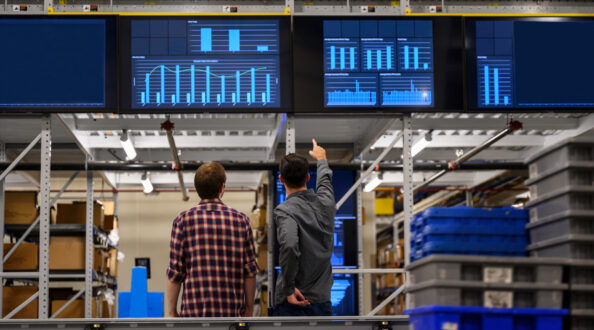
The Connected Data Vision
It’s well known that repeated manual data keying is time-consuming, error-prone and hard to maintain. Inaccurate data causes anything from imprecise forecasts to incorrect staffing levels, errors in sales analysis and difficult out-of-stock situations.
System integration removes the need for repeated manual data keying. It eliminates the risk of error, improves the operational efficiency of the organisation and enables faster, smarter and confident decision-making.
Connected data means:
- planning and forecasting cycles can be repeated without effort;
- analysis and insight times reduce;
- fulfilment times decrease;
- customer response rates improve;
- fewer people needed for data entry, and fewer mistakes occur.
The resulting improvements in trusted data, enables analytics and smarter decisions that are transformative for organisations.
All too often, we see organisations struggling to find success with manual, high-risk data processes that involve error-prone, slow and laborious steps. At best, these processes contain some automation, copying data between systems. At worst, they involve people re-keying data into multiple systems.
Even when these processes are automated, the time it takes to transfer data means systems only update once a day. This delays processes within business functions, makes errors go unnoticed and wastes valuable time unravelling simple data issues. Resolving these issues doesn’t need to be a hugely complex program.
Planning the Connected Roadmap
The first step to a better-connected organisation is always to define a plan, or roadmap, that encompasses data storage, integration, usage, security, processes and, critically, people. You need to know where you’re going and ensure the organisation is behind the strategy. The end goal produces trusted data that’s secured and presented to systems, individuals and third parties for easy consumption in analytics, forecasting, predictive and business processes. But more critically, people need to understand the importance of data, its impact on decision-making and their role in the process. The essential foundation of data quality starts with them!
Helping organisations build trusted data, brings new requirements around the management of data. Therefore, selecting a partner that has the right experience and understands how data is used throughout the business, is critical to achieving a fully connected organisation.
Whilst the latest technologies help, what’s more important is the implementation, the management of data and the people and processes that achieve this. Simply integrating systems without proper consideration may actually proliferate data errors more quickly and result in worse data quality. Imagine the scenario where a new product is created with invalid attributes. In a poorly managed solution, these updates could be pushed immediately into other systems, only to be then further replicated into systems deeper within the organisation. Tracking down those invalid records and rectifying errors can be very costly. It is also important to consider the legacy systems and processes that require human interaction and cannot be directly integrated. These may require other automation options to bridge the remaining gap.
Organisations that successfully integrate their system achieve:
- Competitive advantage from access to trusted, secure, high-quality data
- Reduced costs through improved efficiency and process automation
- Reduced time to fix when errors occur through clear integration processes
- Rapid data updates for systems, processes and analytics
Once this panacea has been realised, the organisation is free to confidently analyse, forecast and predict, across all operational functions, safely within regulatory compliance frameworks such as GDPR and SOX. This provides new ways to operate that increase resilience, reduces risk, and improves efficiency.
Positive Outcomes
One of our Sempre Analytics customers, a global manufacturing organisation, was struggling to source data from a diverse set of companies across hundreds of disconnected sites. The simple process of analysing product group sales across the group was proving too hard a task. Within just a few days, our delivery of a cloud-based integration platform had enabled data to be sourced and transformed into the existing corporate data warehouse every hour, enabling rapid and trusted decision-making around market segmentation, demand forecasting, pricing and go to market strategies.
We’ve also recently been working with a national housebuilder as part of their digital transformation program, moving data processing and storage to a hybrid cloud solution. This allowed existing on-premises applications and data warehouses to seamlessly integrate with their cloud-based CRM, supplier systems and third-party applications. Orders from the marketing suite are updated within the data warehouse and pushed to Rightmove within seconds. Onsite construction issues are tracked in near real-time, providing early insights into contractors, improving production forecasting, reducing wastage and providing cost savings.
The finance team at another Sempre Analytics customer were delighted when we enabled them to reduce their month-end processing from several days to one! Their original processes required the finance team to re-key values across multiple systems, updating codes, descriptions, and replicating hierarchies. Some systems were on-premises, others cloud-based. With Sempre’s help they adopted a new hybrid-cloud approach within a matter of weeks, receiving real-time updates and synchronisation of data across their systems. Removing errors, the time taken to process changes and verify data, enabled the finance team to move onto higher value work
Contact Sempre Analytics to see how you could benefit from integrating data across the organisation.












